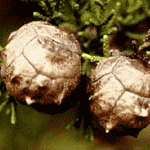Recent History
The invasion of South America by the conquistadors led to the discovery of many new aromatic and medicinal plants, and the gardens of Montezuma provided the basis for many new and important remedies. Native Americans also used aromatic oils to make herbal remedies, which were then discovered by the Settlers.
Monasteries across the world used them for making herbal teas, oils and medicines from their herbal gardens, and during the 12th century and Abbess of Germany grew and distilled lavender for it’s healing and medicinal properties.
The 13th Century was a very significant time for the development of aromatherapy as this was the beginning of the pharmaceutical industry. This encouraged the distillation of many essential oils.
There was a rapid increase in the amount of books written regarding herbs and their properties towards the latter half of the 15th century. More plants were also distilled including rose, sage and juniper.
In the 17th century the Black Plague emerged killing millions of the population. It was discovered that the use of certain plants could help prevent the spread of infection, and others such as cedar wood could be burnt to fumigate the houses and streets. In fact, it believed many perfumers of the time survived thanks to their constant contact with these aromatics.
During the 19th century well to do ladies would have their jewellers make an attractive bottle to hold their perfumes, however more importantly the constituents of the essential oils were identified during this time.
Most Recently
It did not affect Europe however until 1937, when French perfumer Rene Gatefosse badly burned his hand while working in a laboratory. Desperate to soak his hand, he put his hand in the first bowl of liquid he could find, which just happened to be lavender. Gatefosse noticed how quickly the burn healed, and how there was virtually no scarring. He realised that the healing and antiseptic qualities of this natural oil were much greater than the synthetic alternatives available to him. This led him to research the healing effects of various other essential oils.
Another influential person in the development of aromatherapy was Dr Valnet (also a Frenchman) who researched this while working as a doctor during World War II, when medical supplies were very scarce. These provided a very effective alternative in many cases. He also penned the book “The Practice of Aromatherapy” (known as Aromathérapie in French).
During the earlier parts of the 20th century the knowledge of the constituents of essential oils inspired scientists to separate the major ones and replace them with synthetic versions. This was done as it was thought it would be more therapeutic and economical. The synthetic versions were not as therapeutic however it did help with the development of modern medicine.
With an increasing distrust and lack of faith in modern day Western medicine, there has been a significant move towards alternative treatments and therapies, one of these being aromatherapy.

